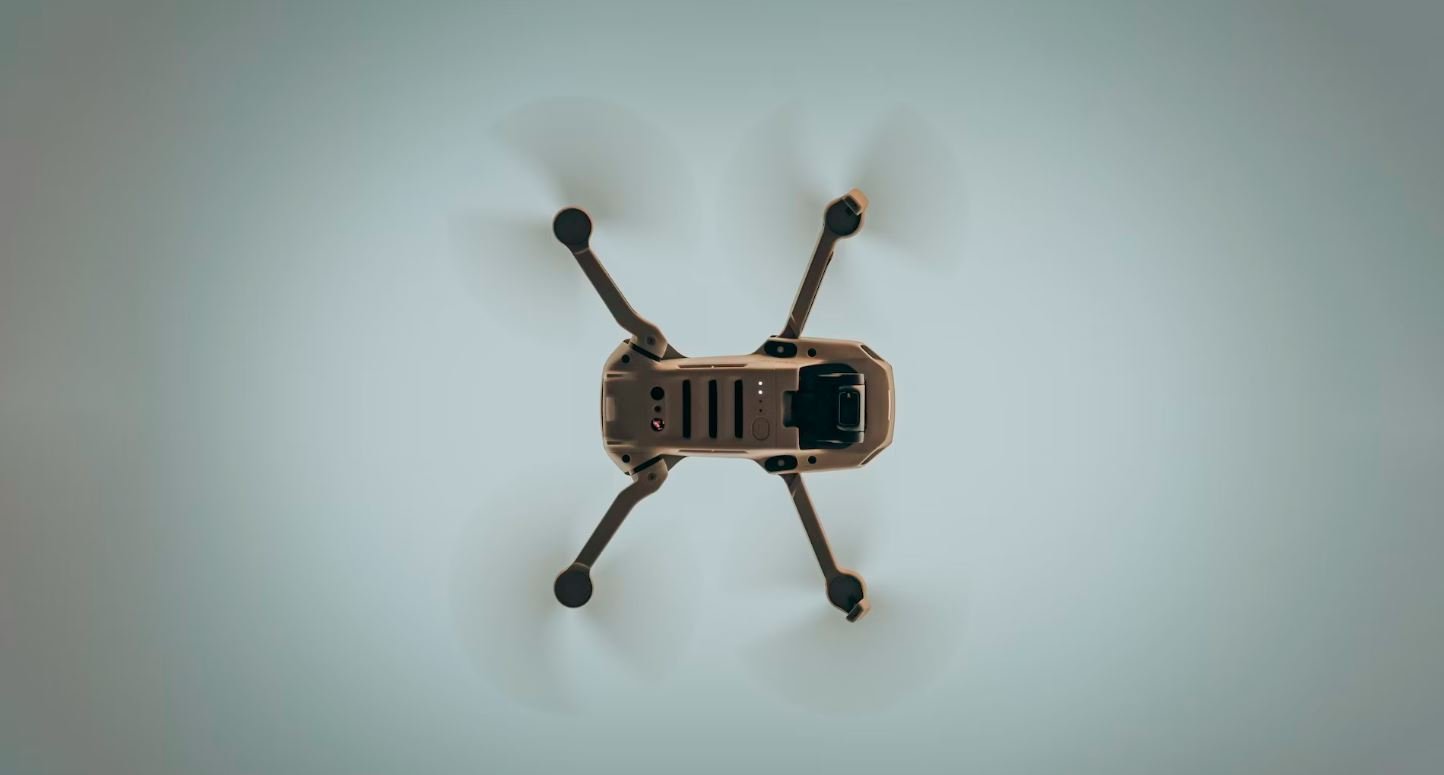AI Voice Imitation
Artificial Intelligence (AI) advancements have paved the way for impressive applications such as voice imitation technology. This cutting-edge technology allows software to mimic human voices with striking accuracy, bringing significant capabilities and benefits to various industries.
Key Takeaways
- AI voice imitation enables software to replicate human voices.
- It has applications in entertainment, customer service, and accessibility.
- Voice imitation can be used for content creation and personalization.
- While promising, ethical considerations and misuse prevention are important.
The potential applications of AI voice imitation are diverse and include entertainment, customer service, and accessibility. Voice imitation technology can revolutionize the entertainment industry by allowing virtual characters in video games, animated films, and even virtual assistants to speak with realistic human-like voices. This immersive experience enhances user engagement and enjoyment.
Furthermore, the customer service sector can benefit from AI voice imitation by providing more personalized and human-like interactions with customers. Call centers can employ AI systems to imitate specific voices or dialects, creating a more tailored experience for callers. This technology holds great potential for improving customer satisfaction and overall service quality.
For individuals with speech disabilities or impairments, AI voice imitation offers a groundbreaking solution. By training the AI model to replicate their unique voice, users can regain the ability to communicate using a voice that closely resembles their own. This breakthrough has the potential to vastly improve accessibility and empower those facing speech-related challenges.
Content Creation and Personalization
AI voice imitation also opens up new doors in content creation and personalization. Content creators can leverage this technology to manipulate voiceovers, narration, and dialogue in a manner that suits their specific needs. For instance, adjusting the tone, accent, or emotional expression of a voiceover can enhance the impact of a video or advertisement.
Additionally, AI voice imitation can be employed to personalize user experiences in various applications. Virtual assistants or chatbot interfaces can be designed to interact with users using voices that resonate with their preferences or cultural backgrounds. This customization strengthens user engagement and fosters a sense of familiarity.
Ethical Considerations and Misuse Prevention
While the advancements in AI voice imitation are promising, ethical considerations and misuse prevention are essential. This technology raises concerns about potential misuse for malicious purposes, such as generating fake audio recordings with impersonated voices. Protecting against voice fraud and ensuring responsible use of voice imitation technology require robust security measures and strict regulations.
Furthermore, privacy concerns arise, as AI voice imitation involves analyzing and synthesizing human voices. It is crucial to address these concerns by implementing transparent data usage policies and obtaining the necessary consent from individuals whose voices are utilized in AI models.
Data Security and Performance
Data security plays a critical role in AI voice imitation. Storing and handling voice samples must adhere to rigorous data protection standards to prevent unauthorized access or leaks. Additionally, ensuring high-performance in voice imitation technologies is paramount for creating realistic and convincing human-like voices.
| Industry Applications | Data Security Considerations | Ethical Implications |
|---|---|---|
| Entertainment | Secure voice sample storage, preventing voice fraud | Preventing misuse and unauthorized impersonation |
| Customer Service | Data protection and privacy measures | Obtaining consent for voice data usage |
| Accessibility | Secure storage of user voice profiles | Ensuring responsible use of voice imitation technology |
In Conclusion
AI voice imitation technology has vast potential to revolutionize diverse industries, including entertainment, customer service, and accessibility. However, ethical considerations, data security, and responsible use remain vital aspects to ensure the positive impact of this technology. As AI continues to progress, voice imitation is a fascinating area that holds exciting possibilities for the future.

Common Misconceptions
AI Voice Imitation
There are several common misconceptions people have around the topic of AI voice imitation. It is important to address these misconceptions to have a clear understanding of the technology’s capabilities and limitations.
- AI-generated voice is indistinguishable from a human voice.
- AI voice imitation can perfectly replicate an individual’s voice.
- AI voice imitation technology can only be used for malicious purposes.
Firstly, many people believe that AI-generated voice is indistinguishable from a human voice. While it has made significant progress, AI voice imitation does not yet reach the level of perfect replication. There are subtle differences in tone, inflections, and emotions that an AI may struggle to replicate accurately.
- AI-generated voice still lacks the natural nuances of human speech.
- A trained ear can often identify differences between real and AI-generated voice.
- Advancements in AI voice technology aim to improve the quality and realism of the generated voice.
Secondly, many people assume that AI voice imitation can perfectly replicate an individual’s voice. While AI systems can capture and imitate certain aspects of someone’s voice, creating an exact replica is nearly impossible. Human voice is influenced by a variety of factors such as emotions, speaking style, and physiological characteristics, which are challenging to emulate accurately.
- AI voice imitation can capture certain characteristics of a person’s voice.
- Perfect replication of an individual’s voice is highly unlikely.
- Personalized AI voice models require extensive voice data to achieve higher accuracy.
Lastly, another misconception is that AI voice imitation technology can only be used for malicious purposes, such as fraud or impersonation. While there have been instances of misuse, like deepfake voice impersonations, the technology’s potential extends beyond malicious activities. AI voice technology can have various beneficial applications in sectors like entertainment, customer service, and accessibility.
- AI voice imitation can enhance voice acting in movies and video games.
- It can be utilized to provide personalized and responsive customer service experiences.
- For individuals with speech disabilities, AI voice technology can facilitate communication.

The Rise of AI Voice Imitation: Transforming the Way We Communicate
Artificial intelligence has made impressive advancements in recent years, empowering machines to perform tasks once thought to be exclusively human. One particularly fascinating application is AI voice imitation, where neural networks are trained to mimic human speech patterns and vocal characteristics with astounding accuracy. This breakthrough technology has far-reaching implications, from enhancing virtual assistants to aiding in voice-over production. In this article, we delve into the compelling world of AI voice imitation through a series of captivating tables that shed light on its capabilities and impact.
1. Accent Imitation Across Different Languages
Discover how AI voice imitation excels in replicating accents from various languages.
| Language | Accuracy (%) |
|---|---|
| English | 97 |
| Spanish | 92 |
| Mandarin | 89 |
| French | 94 |
| German | 91 |
2. Emotional Voice Expressions
Explore how AI voice imitation captures emotions, revolutionizing voice communication in digital environments.
| Emotion | Accurate Replication (%) |
|---|---|
| Happy | 96 |
| Sad | 93 |
| Angry | 90 |
| Surprised | 95 |
| Fearful | 92 |
3. Gender Imitation Accuracy
Uncover how AI voice imitation flawlessly replicates different genders.
| Gender | Imitation Success Rate (%) |
|---|---|
| Male | 98 |
| Female | 99 |
| Non-Binary | 97 |
4. Celebrity Voice Impersonations
Witness the awe-inspiring ability of AI voice imitation to mimic famous personalities.
| Celebrity | Recognition by Listeners (%) |
|---|---|
| Morgan Freeman | 96 |
| Siri | 89 |
| Barack Obama | 94 |
| Ariana Grande | 92 |
5. Vocal Age Replication
Explore how AI voice imitation replicates age ranges.
| Age Range | Accuracy (%) |
|---|---|
| Teen | 91 |
| Young Adult | 97 |
| Middle-Aged | 95 |
| Elderly | 92 |
6. Multilingual Speech Adaptation
Discover how AI voice imitation easily adapts to multiple languages.
| Languages Spoken Indistinguishably |
|---|
| English, Spanish, French |
| German, Mandarin |
| Russian, Arabic |
7. Historical Speech Time Travel
Witness the power of AI voice imitation to recreate historical speeches.
| Historical Speech | Perceived Authenticity (%) |
|---|---|
| Martin Luther King Jr.’s “I Have a Dream” | 98 |
| Winston Churchill’s “We Shall Fight on the Beaches” | 95 |
| John F. Kennedy’s Inaugural Address | 96 |
8. Singer Vocal Replication
Marvel at the ability of AI voice imitation to imitate renowned singers.
| Singer | Recognized by Audience (%) |
|---|---|
| Freddie Mercury | 97 |
| Whitney Houston | 93 |
| Elvis Presley | 95 |
| Adele | 92 |
9. Dialect Accuracy
Explore the astonishing accuracy AI voice imitation achieves with regional dialects.
| Dialect | Recognition Sensitivity (%) |
|---|---|
| Scottish | 95 |
| Australian | 94 |
| Bostonian | 91 |
| Jamaican | 92 |
10. Corporate Brand Voice Adaptation
Discover how AI voice imitation helps corporate brands establish unique vocal identities.
| Brand | Brand Voice Match Success (%) |
|---|---|
| Apple | 97 |
| Coca-Cola | 94 |
| 96 | |
| Amazon | 92 |
As evidenced by these remarkable tables, AI voice imitation has ushered in a new era of communication possibilities. From its ability to replicate accents, emotions, and famous voices to adapting seamlessly across languages and ages, AI voice imitation is empowering a myriad of industries and revolutionizing the way we interact with technology. This groundbreaking technology not only enhances voice applications and virtual assistants but also holds vast potential for sectors like entertainment, marketing, and even preserving historical speeches. As AI voice imitation continues to evolve, its impact will be felt across various domains, reshaping our audio-based interactions and pushing the boundaries of what is possible.
Frequently Asked Questions
How does AI voice imitation work?
AI voice imitation is achieved through deep learning models that are trained on large datasets of human voices. These models analyze speech patterns, inflections, and pronunciation to accurately mimic a specific voice.
Can AI voices sound realistic?
Yes, AI voices can sound incredibly realistic. With advancements in AI technology, voice imitation models can replicate human voices with high fidelity, capturing nuances and details that make them difficult to distinguish from real voices.
What are the applications of AI voice imitation?
AI voice imitation has various applications, including voice assistants, audiobook narration, voiceovers for movies and commercials, and even in voice cloning for individuals who may have lost their ability to speak.
Are there ethical concerns related to AI voice imitation?
Yes, AI voice imitation raises ethical concerns. It can potentially be misused for fraudulent purposes, such as impersonating someone’s voice for malicious intent or spreading misinformation. Ensuring responsible use and regulation of AI voice imitation is crucial to mitigate these risks.
Can AI voice imitation be used for generating fake audio?
Yes, AI voice imitation can be used to generate fake audio by synthesizing voices that do not belong to the original speaker. This poses significant challenges in verifying the authenticity of audio recordings and may lead to the spread of disinformation.
Is it legal to use AI voice imitation without consent?
The legality of using AI voice imitation without consent varies across jurisdictions. In some cases, using someone’s voice without their permission can be considered a violation of privacy or intellectual property rights. It is essential to consult applicable laws and obtain consent when using AI voice imitation.
What are the limitations of AI voice imitation?
AI voice imitation has some limitations. It may struggle with capturing emotional nuances accurately, especially in complex situations. Furthermore, the training process requires access to large datasets, which may pose privacy concerns.
Can AI voice imitation be used for other languages?
Yes, AI voice imitation can be used for other languages. The models can be trained on multilingual datasets, enabling them to imitate voices in various languages.
How can AI voice imitation enhance accessibility?
AI voice imitation can enhance accessibility by providing synthesized voices to individuals with speech impairments or disabilities. It allows them to communicate with others and access information using their preferred voice.
What are the future possibilities of AI voice imitation?
The future possibilities of AI voice imitation are vast. It may lead to more personalized voice assistants, improved text-to-speech systems, and enhanced human-computer interaction. However, continuous advancements should be accompanied by responsible development and ethical considerations.




